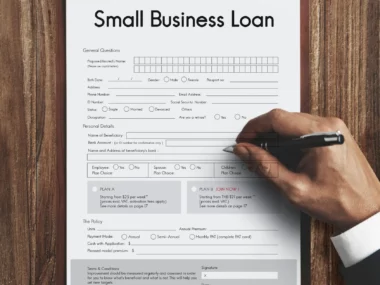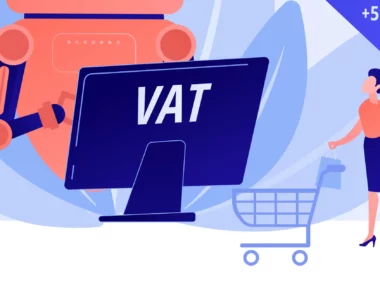If you are looking to get a business loan as a way to finance your business goals, such as starting, expanding, or improving your business, you may consider applying now.
However, getting a business loan can be a complicated and time-consuming process that requires careful planning and preparation. In this blog post, we will show you the steps of how to get a business loan in the USA, and what you need to consider before applying.
Step 1: Decide what type of loan you need
The first step of getting a business loan is to decide what type of loan you need and how much you want to borrow. There are different types of business loans available in the USA, such as:
- Term loans: These are loans that give you a lump sum of money that you repay over a fixed period of time with interest. Term loans can be used for various purposes, such as buying equipment, inventory, or real estate. Term loans can be secured or unsecured, meaning they may or may not require collateral.
- Lines of credit: These are loans that give you access to funds up to a certain limit as you need them. Lines of credit can be used for short-term or working capital needs, such as paying payroll, inventory, or cash flow gaps. Lines of credit typically have lower interest rates than term loans, but they may have fees and require collateral.
- SBA loans: These are loans that are partly guaranteed by the Small Business Administration (SBA), a federal agency that supports small businesses. SBA loans can offer longer repayment terms, lower interest rates, and higher borrowing amounts than conventional loans, but they also have stricter eligibility requirements and more paperwork.
- Alternative loans: These are loans that are offered by non-bank lenders, such as online platforms, fintech companies, or microlenders. Alternative loans can be easier and faster to obtain than traditional loans, but they may also have higher interest rates, fees, and shorter repayment terms.
The type of loan you need will depend on your business goals, financial situation, credit history, and industry. You should also consider how much you can afford to repay and how long you need the funds for.
Step 2: Check your qualifications
The next step of getting a business loan is to check your qualifications and see if you meet the lender’s requirements. Different lenders have different criteria for approving business loans, but some common factors they may look at include:
- Your personal and business credit scores: These are numbers that show your creditworthiness and repayment history. Lenders use them to assess your risk level and determine your interest rate. Generally, the higher your credit scores, the better your chances of getting approved and getting lower rates. You can check your personal credit score for free from several sources, such as NerdWallet, and your business credit score from major bureaus, such as Dun & Bradstreet or Experian.
- Your time in business: This is how long you have been running your business. Lenders use it to gauge your experience and stability. Generally, the longer your time in business, the more likely you are to get approved and get better terms. Most lenders require at least one year of business history, but some may require more or less depending on the type of loan.
- Your annual revenue: This is how much money your business makes in a year. Lenders use it to measure your profitability and cash flow. Generally, the higher your annual revenue, the more likely you are to get approved and get higher amounts. Most lenders require at least $50,000 in annual revenue, but some may require more or less depending on the type of loan.
- Your debt-to-income ratio: This is how much debt you have compared to how much income you have. Lenders use it to evaluate your ability to repay the loan. Generally, the lower your debt-to-income ratio, the better your chances of getting approved and getting lower rates. Most lenders prefer a debt-to-income ratio of 35% or less.
You should also prepare some documents that lenders may ask for when applying for a business loan,
such as:
- Your personal and business tax returns
- Your bank statements
- Your income statements
- Your balance sheets
- Your business plan
- Your legal documents (such as licenses, permits, contracts, etc.)
Step 3: Compare lenders
The third step of getting a business loan is to compare lenders and find the best option for your needs. There are many lenders that offer business loans in the USA, such as:
- Banks: These are traditional financial institutions that offer various types of business loans with competitive rates and terms. However, banks also have strict eligibility requirements and lengthy application processes that may not suit every borrower.
- Online lenders: These are non-bank lenders that operate online and offer fast and convenient access to various types of business loans with flexible requirements and terms. However,
- online lenders also tend to charge higher interest rates and fees than banks and may not offer as much customer service or support.
- Microlenders: These are non-profit organizations that provide small amounts of funding (usually up to $50,000) to underserved or disadvantaged entrepreneurs who may not qualify for other types of business loans. Microlenders also offer mentoring and training programs to help borrowers succeed. However, microlenders also have limited availability and may not meet every borrower’s needs.
When comparing lenders, you should consider factors such as:
- The type of loan they offer
- The amount they can lend
- The interest rate they charge
- The fees they charge
- The repayment term they offer
- The eligibility requirements they have
- The application process they have
- The customer reviews they have
You can use online tools such as NerdWallet’s small-business loan comparison tool or SBA’s Lender Match tool to find and compare lenders that match your criteria.
Step 4: Apply for the loan
The fourth step of getting a business loan is to apply for the loan with the lender of your choice. Depending on the lender and the type of loan you choose,
you may be able to apply online or in person.
To apply for the loan,
you will need to fill out an application form with information about yourself and your business,
such as:
- Your name
- Your address
- Your phone number
- Your email address
- Your social security number
- Your date of birth
- Your business name
- Your business address
- Your business phone number
- Your business email address
- Your employer identification number (EIN)
- Your legal structure (such as sole proprietorship, partnership, LLC, etc.)
- Your industry (such as retail, manufacturing, service, etc.)
- Your purpose for the loan (such as working capital, equipment purchase, expansion, etc.)
- Your requested loan amount
You will also need to provide some documents that support your application, such as:
- Your personal and business tax returns
- Your bank statements
- Your income statements
- Your balance sheets
- Your business plan
- Your legal documents (such as licenses, permits, contracts, etc.)
After submitting your application, you will need to wait for the lender’s decision, which may take from a few minutes to a few weeks, depending on the lender and the type of loan.
If your application is approved, you will receive a loan offer from the lender, which will include details such as:
- The loan amount
- The interest rate
- The fees
- The repayment term
- The monthly payment
You should review the loan offer carefully and make sure you understand all the terms and conditions before accepting it.
If your application is denied, you will receive a notice from the lender, which will include reasons for the denial, such as:
- Low credit score
- Insufficient revenue
- High debt-to-income ratio
- Lack of collateral
You should review the notice carefully and see if there is anything you can do to improve your chances of getting approved in the future, such as:
- Improving your credit score
- Increasing your revenue
- Reducing your debt-to-income ratio
- Providing collateral
Step 5: Get and repay the loan
The fifth step of getting a business loan is to get and repay the loan according to the agreement with the lender.
To get the loan, you will need to sign a promissory note or a contract with the lender, which will outline all the terms and conditions of the loan.
The lender will then disburse the funds to you, either by depositing them into your bank account or by issuing a check.
To repay the loan, you will need to make regular payments to the lender, either by setting up automatic withdrawals from your bank account or by sending checks or money orders.
You should keep track of your payments and balance, and make sure you pay on time and in full every month.
If you have any issues or questions about your loan repayment, you should contact your lender as soon as possible.
Conclusion
Getting a business loan can be a rewarding experience that can help you achieve your business goals.
However, it can also be a complicated process that requires careful planning and preparation.
By following these steps, you can increase your chances of getting approved for a business loan that suits your needs.




